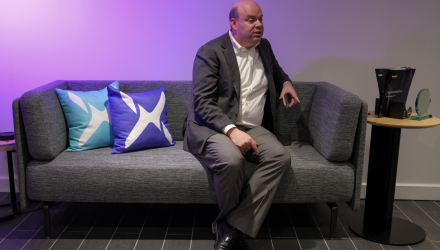Covered call ETFs remain in focus to advisors, and as such, to asset managers. Indeed, Fidelity recently joined the growing group of well-established asset managers that offer enhanced income ETFs. The Fidelity Yield Enhanced Equity ETF (FYEE) launched April 11. Over half of the 75 covered call products tracked by Bloomberg have been launched in the last 16 months.
With these ETFs, asset managers write call options on a percentage of the equity exposure to generate additional income. Such ETFs tend to offer higher income than the broader market as well as less upside/downside.
Advisors have been eager to learn more about these alternative products in 2024. Indeed, during a late-April VettaFi advisor webcast with NEOS Investments, we asked attendees a series of questions. One was, “Have you ever utilized options-based strategies to increase tax-efficient income?” While a slight majority said yes, 47% said they came to the webcast to learn more about the approaches as potential first-time users.

This was not a one-off. Indeed, in February, VettaFi hosted a webcast with Kurv Investment Management on covered calls. Only 45% of respondents had implemented a covered call strategy of stocks or indexes. What was most encouraging was that 42% had not implemented covered calls but were considering doing so.
Understanding Potential Performance
When I wrote about covered call ETFs in March, the U.S. stock market was climbing higher. I felt the need to highlight that using covered call ETFs for equity exposure will impact performance.
“They are a great strategy to create income, but a lot of people do not understand the trade-off,” explained Simeon Hyman, global investment strategist at ProShares, at the Exchange conference. “If you sell a call, you are getting income… but you are giving up the upside in the market.”
April Was Different
In April, the SPDR S&P 500 ETF (SPY) was down 4.0% despite a strong earnings season. In contrast, covered call ETFs have a relatively strong month.
The Global X S&P 500 Covered Call ETF (XYLD), which has been trading for more than a decade, declined only 1.3% in April. Meanwhile the JPMorgan Equity Premium Income ETF (JEPI), which is the largest of these funds, with $33 billion in assets, fell just 2.8%.
Other S&P-500-oriented ETFs also performed well last month. The Goldman Sachs S&P 500 Core Premium Income ETF (GPIX), the NEOS S&P 500 High Income ETF (SPYI), the Parametric Equity Premium Income ETF (PAPI) were all down less than SPY in April, highlighting the potential value of such strategies.
It was not just the S&P 500 Index that was down in April. The Invesco NASDAQ 100 (QQQM) was down 4.4%. The ProShares Nasdaq-100 High Income ETF (IQQQ) fell less than QQQM.
VettaFi Alternatives Symposium
However, each of these ETFs perform differently because they are constructed differently. This is why I’m excited we will be talking about covered call strategies and options-based ETFs at the VettaFi Alternatives Symposium on May 30. Join Lara Crigger, me, and asset management experts to learn more about these approaches and understand their risks and reward potential.
For more news, information, and analysis visit the Tax Efficient Income Channel.

